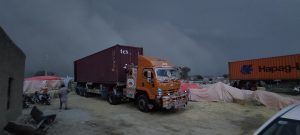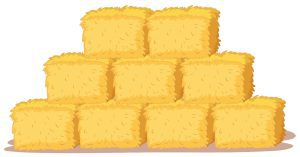Wheat straw is a vital agricultural by-product in Pakistan, widely used in livestock feeding, packaging, and increasingly in the biomass fuel industry. However, pests like locusts, armyworms, and aphids significantly affect both the quality and quantity of wheat straw. These pests don’t just damage the grain — they impact the straw’s strength, color, and storage life.
- Locust Attacks: A Threat from the Sky
Locusts travel in massive swarms and can destroy entire wheat fields in hours. When they feed, they strip the plants of leaves and stems, leaving behind brittle, contaminated straw. Even if the wheat survives, the remaining straw is weakened, discolored, and often unfit for biomass use or animal feed. - Armyworms and Cutworms
These ground-dwelling caterpillars chew through young wheat plants and stems, reducing overall plant growth. This leads to stunted crops that produce low-volume, fragile straw, which breaks easily during handling and baling. - Aphids and Sucking Insects
Although they don’t chew, aphids drain sap from wheat stems and leaves. Heavy infestations leave plants weak and discolored. This affects the nutritional value of straw for livestock and the energy value when used as biomass fuel. - Storage Pests
Post-harvest, pests like weevils and mites can infest straw stored in warehouses. This leads to fungal growth, mold, and decomposition—making the straw unusable or dangerous to animals if used as fodder.
Prevention Tips
Early Pest Monitoring: Farmers should scout fields regularly.
Proper Storage: Keep straw dry and well-ventilated to prevent infestations.
Safe Pest Control: Use natural and approved pesticides to protect the straw without harming its end-use quality.
Conclusion
Protecting wheat straw from pests ensures it remains a valuable resource. Whether it’s for burning in mills, feeding animals, or selling to biomass plants, high-quality straw starts with good pest management in the field and proper handling afterward.



